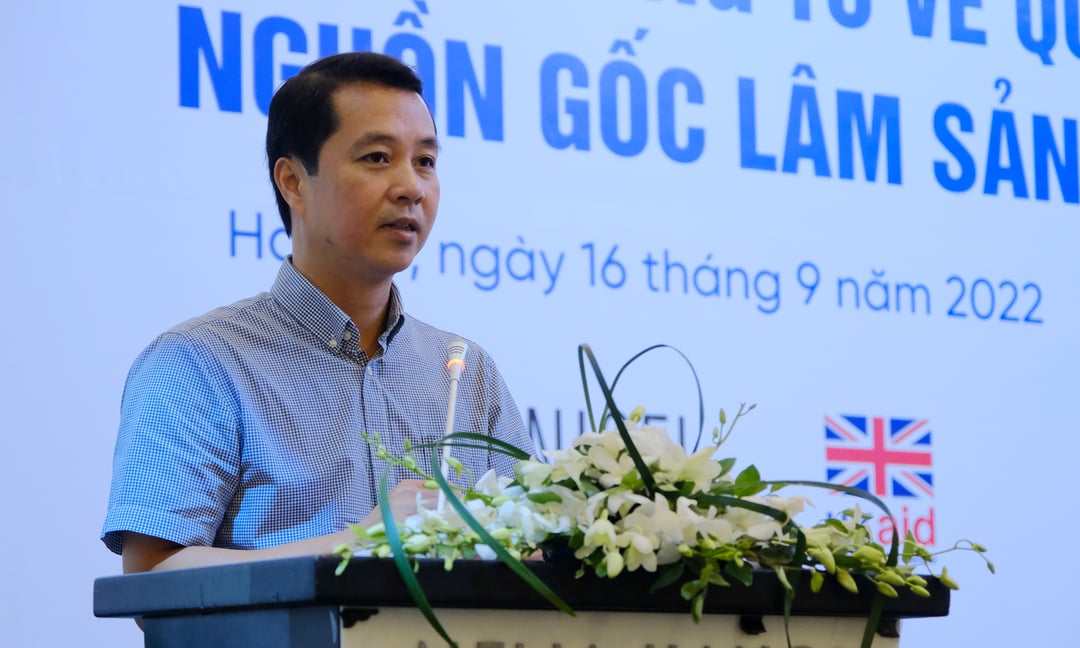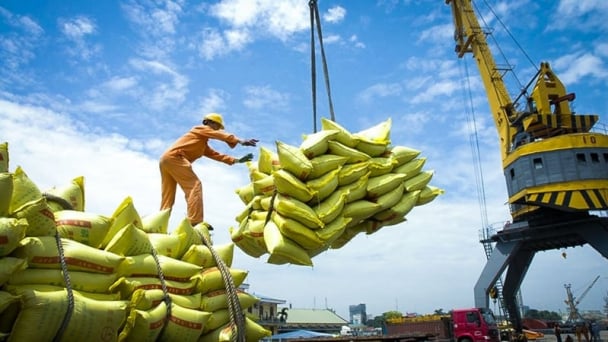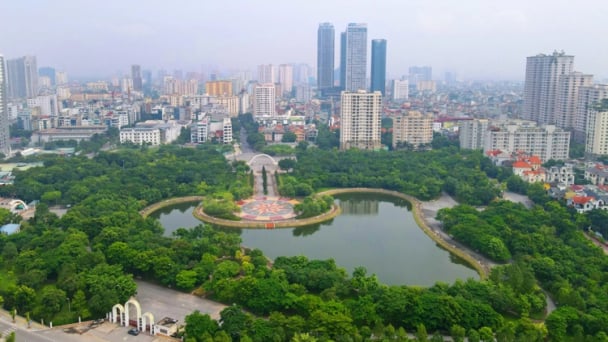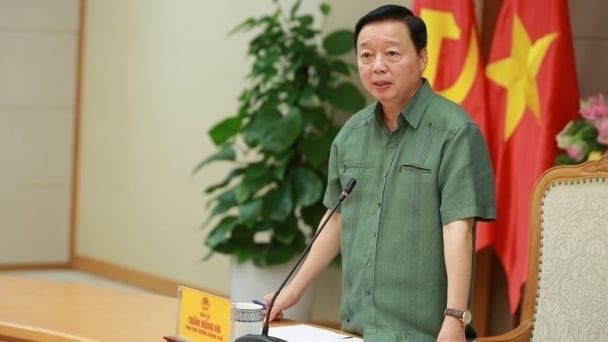May 22, 2025 | 15:21 GMT +7
May 22, 2025 | 15:21 GMT +7
Hotline: 0913.378.918
May 22, 2025 | 15:21 GMT +7
Hotline: 0913.378.918

Mr. Bui Chinh Nghia, Deputy Director General of the General Directorate of Forestry, spoke at the forum. Photo: BT.
In mid-August 2022, the General Directorate of Forestry drafted a Circular to replace Circular No. 27/2018/TT-BNNPTNT dated November 16, 2018, of the Ministry of Agriculture and Rural Development on the management and traceability of forest products and asked for advice widely with relevant ministries, departments, branches, and associations.
At the forum on commenting on the draft of the Circular on the management and traceability of forest products on September 16, Deputy Director General of the General Directorate of Forestry Bui Chinh Nghia said that the top goal of the new Circular is to create transparency for the management and traceability of forest products. In addition, the new circular needs to be in harmony with international regulations.
"The new draft circular consists of 7 chapters and 40 articles, and three appendices, focusing on managing timber products harvested in chains. Under the direction and guidance of the Ministry of Agriculture and Rural Development, the forestry sector advocates strictly managing natural forest wood and imported wood, and also time encouraging the building of a brand to trace and manage wood sustainably," Mr. Nghia said.
Recently, Minister of Agriculture and Rural Development Le Minh Hoan called for a change in thinking and behavior with industry associations. In particular, management agencies need to consider enterprises as companions to jointly create a common development space for the entire agricultural industry.
This continued to be repeated by Deputy Director General Bui Chinh Nghia when developing the new Draft Circular. The representative of the General Directorate of Forestry, Mr. Nghia Hung, will widely receive opinions, considering the coordination stage as a breakthrough factor contributing to the sustainable development of the timber industry.
As the lead developer of the Draft, the Forest Protection Department introduced some new points in the Circular to replace Circular 27. That is, non-timber forest plants will not include firewood. The measurement of firewood, if it meets the specifications, is measured like wood. Otherwise, it will be measured in units of ste to convert to m3.
The determination of the volume of woody plants must be calculated when the roots, stems, and leaves are still present. The circular will also specifically divide regulations based on the current three types of forests: special-use forests, protection forests, and production forests, instead of being divided into planted and natural woods.

Forest rangers measure and classify timber. Photo: BT.
The types of timber at risk are also specified as wood harvested from domestic natural forests, imported timber not in an active geographical area, or wood at risk under the provisions of the Vietnamese Legal Timber Assurance System. Non-timber forest plants on the List of endangered and rare forest plants and animals and the CITES Appendix are exploited from the wild...
Based on this orientation, Dr. To Xuan Phuc, Advisor of Forest Trend, proposes two main issues in the revised Draft Circular.
Regarding the verification of timber origin, Mr. Phuc said that local authorities need to confirm the legitimacy of the household head based on the short-term cultivated land. In the long term, the management agency needs to implement the issuance of books, correct errors between the books and the field, and legalize the areas of perennial cultivation.
"This is not only the job of forest owners but also transparency of input sources for a billion-dollar export industry," Mr.Phuc said.
Mr. Phuc's second opinion is the amendment of tax policy. According to this expert, many participants in the wood production chain are small, informal households with a revenue of less than VND 1 billion per year. Still, they are currently subject to a flat tax rate of 1%. Mr. Phuc said that this number should be 0% to create motivation for people to produce.
Some suggested that new mechanisms and policies should focus on inspection and supervision at risk stages in the chain and simplify procedures at low-risk stages. The new policy mechanism must be closer to reality to encourage the parties' compliance.
Vietnam currently has about 4.4 million hectares of planted forests, which includes more than 1 million hectares of plantations belonging to 1.1 million households. Annually, these areas provide nearly 30 million cubic meters of round timber, making an essential contribution to the development of the wood industry and creating jobs for millions of workers.
However, the reality shows that enterprises with exported wood products using plantation timber face difficulties refunding value-added tax. The main reason for this situation is the bottlenecks in determining the origin of planted forest timber and the legality of transactions at intermediate stages in the supply chain.
Translated by Ha Phuc

(VAN) The draft amendment to the Circular on rice export trading stipulates a periodic reporting regime for rice exporting enterprises.

(VAN) Dong Thap farmers attained an average profit margin of 64% during the summer-autumn 2024 crop (first season), while An Giang and Kien Giang farmers followed with 56% and 54%, respectively.

(VAN) As a doctoral student doing research on renewable energy and electrification at Harvard University, the author shares his musings on electricity, nature, and countryside memories.

(VAN) The decree on Extended Producer Responsibility (EPR) ensures transparent management and disbursement of support funds, avoiding the creation of a “give-and-take” mechanism.

(VAN) Hue City rigorously enforces regulations regarding marine fishing and resource exploitation, with a particular emphasis on the monitoring of fishing vessels to prevent illegal, unreported, and unregulated (IUU) fishing.

(VAN) Hanoi People's Committee has issued a plan on reducing greenhouse gas emissions in the waste management sector with 2030 vision.

(VAN) Vietnam's draft amendment to Decree No. 156 proposes a mechanism for medicinal herb farming under forest canopies, linking economic development to population retention and the sustainable protection and development of forests.